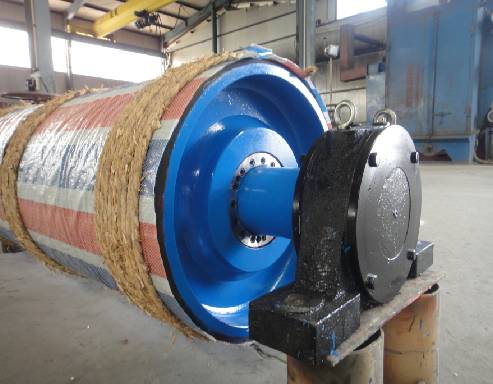 Afrikaans
Afrikaans  Albanian
Albanian  Amharic
Amharic  Arabic
Arabic  Armenian
Armenian  Azerbaijani
Azerbaijani  Basque
Basque  Belarusian
Belarusian  Bengali
Bengali  Bosnian
Bosnian  Bulgarian
Bulgarian  Catalan
Catalan  Cebuano
Cebuano  Corsican
Corsican  Croatian
Croatian  Czech
Czech  Danish
Danish  Dutch
Dutch  English
English  Esperanto
Esperanto  Estonian
Estonian  Finnish
Finnish  French
French  Frisian
Frisian  Galician
Galician  Georgian
Georgian  German
German  Greek
Greek  Gujarati
Gujarati  Haitian Creole
Haitian Creole  hausa
hausa  hawaiian
hawaiian  Hebrew
Hebrew  Hindi
Hindi  Miao
Miao  Hungarian
Hungarian  Icelandic
Icelandic  igbo
igbo  Indonesian
Indonesian  irish
irish  Italian
Italian  Japanese
Japanese  Javanese
Javanese  Kannada
Kannada  kazakh
kazakh  Khmer
Khmer  Rwandese
Rwandese  Korean
Korean  Kurdish
Kurdish  Kyrgyz
Kyrgyz  Lao
Lao  Latin
Latin  Latvian
Latvian  Lithuanian
Lithuanian  Luxembourgish
Luxembourgish  Macedonian
Macedonian  Malgashi
Malgashi  Malay
Malay  Malayalam
Malayalam  Maltese
Maltese  Maori
Maori  Marathi
Marathi  Mongolian
Mongolian  Myanmar
Myanmar  Nepali
Nepali  Norwegian
Norwegian  Norwegian
Norwegian  Occitan
Occitan  Pashto
Pashto  Persian
Persian  Polish
Polish  Portuguese
Portuguese  Punjabi
Punjabi  Romanian
Romanian  Russian
Russian  Samoan
Samoan  Scottish Gaelic
Scottish Gaelic  Serbian
Serbian  Sesotho
Sesotho  Shona
Shona  Sindhi
Sindhi  Sinhala
Sinhala  Slovak
Slovak  Slovenian
Slovenian  Somali
Somali  Spanish
Spanish  Sundanese
Sundanese  Swahili
Swahili  Swedish
Swedish  Tagalog
Tagalog  Tajik
Tajik  Tamil
Tamil  Tatar
Tatar  Telugu
Telugu  Thai
Thai  Turkish
Turkish  Turkmen
Turkmen  Ukrainian
Ukrainian  Urdu
Urdu  Uighur
Uighur  Uzbek
Uzbek  Vietnamese
Vietnamese  Welsh
Welsh  Bantu
Bantu  Yiddish
Yiddish  Yoruba
Yoruba  Zulu
Zulu Types and Applications of Belt Drive Pulleys in Mechanical Systems
Belt Drive Pulley Types An Overview
Belt drive systems are integral to various machinery and automotive applications, providing a means to transfer power and motion efficiently. At the core of these systems lies the pulley, a crucial component that facilitates the functioning of belts. Understanding the different types of belt drive pulleys is essential for engineers, mechanics, and anyone involved in the design and maintenance of these systems.
1. Standard Pulleys
Standard pulleys are the most common type used in belt drive systems. They serve as the basic component for transferring power between two rotating shafts. Usually made from materials like steel, aluminum, or plastic, standard pulleys can be flat or grooved. The choice of design depends on the application and the type of belt used. Flat pulleys are ideal for flat belts, while grooved pulleys are designed for V-belts, which provide better grip and efficiency in power transmission.
2. V-Pulleys
V-pulleys, which feature a V-shaped groove, are designed to accommodate V-belts. These pulleys are essential in applications where a high level of grip and power transmission is required. The V-shape allows the belt to sit firmly in place, reducing the likelihood of slippage and enhancing the system's efficiency. V-pulleys come in various sizes and configurations, making them versatile for different applications.
3. Sheaves
Sheaves are similar to standard pulleys but are specifically used in conjunction with timing belts or chain systems. They feature precisely machined grooves that correspond to the tooth profile of timing belts. This design ensures that the belt engages correctly, allowing for accurate synchronization of gear systems. Sheaves are widely used in automotive engines and machinery where precise timing is crucial.
belt drive pulley types

4. Idler Pulleys
Idler pulleys are non-driven pulleys used in belt drive systems to change the direction of the belt or to maintain tension in the belt system. These pulleys do not transmit power; instead, they help guide the belt and prevent slack. Properly designed idler pulleys are vital for the longevity and efficiency of belt drive systems. They can also reduce wear on other pulleys by keeping the belt taut and aligned.
5. Tandem Pulleys
Tandem pulleys, also known as multiple pulleys, are used when multiple belts need to be driven by a single motor. These pulleys allow for efficient power transfer to several belts simultaneously. Tandem pulleys can be useful in applications where space is limited, allowing for a compact design while still maintaining power transmission across multiple paths.
6. Adjustable Pulleys
Adjustable pulleys allow for variation in the belt tension and drive speed. These pulleys can be easily modified during operation, making them ideal for applications that require fine-tuning of speed and torque. Adjustable pulleys provide versatility and are commonly found in conveyor systems and machinery where load conditions can frequently change.
Conclusion
The selection of the appropriate belt drive pulley type is critical for the performance and reliability of any belt-driven system. Whether it’s a standard pulley for basic power transmission or a more specialized type like an idler or adjustable pulley, each has its own specific function and applications. Understanding these differences not only enhances the design and implementation of mechanical systems, but also contributes to better maintenance practices, ultimately leading to increased operational efficiency and longevity.
-
Revolutionizing Conveyor Reliability with Advanced Rubber Lagging PulleysNewsJul.22,2025
-
Powering Precision and Durability with Expert Manufacturers of Conveyor ComponentsNewsJul.22,2025
-
Optimizing Conveyor Systems with Advanced Conveyor AccessoriesNewsJul.22,2025
-
Maximize Conveyor Efficiency with Quality Conveyor Idler PulleysNewsJul.22,2025
-
Future-Proof Your Conveyor System with High-Performance Polyurethane RollerNewsJul.22,2025
-
Driving Efficiency Forward with Quality Idlers and RollersNewsJul.22,2025





























